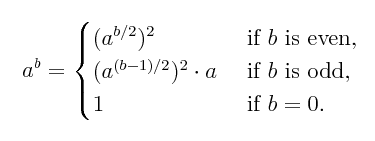 |
CS 3723 Programming Languages |
List Workpage 2 Conditionals and Functions | |
Lisp Conditionals and Functions: Lisp has a traditional if-then-else but we are going to teach (and use) only the original general cond:
- cond is another special function that evaluates
its arguments in a sequential way:
Conditional: in place of if-then-else (cond (pred1 result1) (pred2 result2) ... (t default))
- defun is special function that does not evaluate
its arguments, but produces the side effect of defining a function.
Below shows the form of a definition and of a call.
defun: define a function (defun fname (v1 v2 ... vn)
; definition of function ;; body of function (sequence of S-expressions) ;; value of last one is value returned ) (fname arg1 arg2 ... argn) ; call of function - In the above fname is the name of the function, v1 v2 ... vn are the n formal parameters which must be identifiers, arg1 arg2 ... argn are the n actual parameters which can be any S-expressions, which will all be evaluated before the function is applied using the supplied definition.
Examples and Problems: This page concludes with a sequence of examples and problems for Recitation 9. The first function we gave was the factorial:
(defun factorial (n) ; a function definition
(cond ((= n 0) 1)
(t (* n (factorial (- n 1)))) ))
|
(defun factorial (n) ; a function definition
(cond ((= n 0) 1)
(t (* n (factorial (1- n)))) ))
|
Problem 9.4: Mimic the factorial function above to define a function harmonic, where (harmonic n) returns the value
1 + (1/2) + (1/3) + . . . + (1/(n-1)) + (1/n).
- First use the operator / with integers, so that the answers are rational numbers. [Try out n = 10, 20. As a check, the value of (harmonic 10) should be 7381 / 2520. See the Questions page for the answer to a question about this problem.]
- Then rewrite the harmonic function using constants with a decimal point and with "L0" at the end to force Lisp to use long double numbers. [Now as a check the value of (harmonic 10) should start out 2.928968253968.]
Problem 9.5: Write a recursive function fibonacci that will return the nth fibonacci number F[n], where
F[0] = 0, F[1] = 1, and F[n] = F[n-1] + F[n-2].[For reference, (fibonacci 10) should return 55, (fibonacci 20) returns 6765 after a few seconds, (fibonacci 30) returns 832040 after a few seconds, and (fibonacci 35) may take a minute to return 9227465.
Problems Involving "raise-to-a-power" or "pow": Consider a recursive function to raise a number to a positive integer power:
| pow function |
|---|
(defun pow (a b)
(cond ((= b 0) 1)
(t (* (pow a (1- b)) a)) ))
|
| pow function | |||
|---|---|---|---|
(defun pow (a b)
(princ '|pow: |)(prin1 a)(princ '| |)(prin1 b)(terpri)
(cond ((= b 0) 1)
(t (* (pow a (1- b)) a)) ))
| |||
> (pow 11 6) pow: 11 6 pow: 11 5 pow: 11 4 pow: 11 3 pow: 11 2 pow: 11 1 pow: 11 0 1771561 | > (pow 2972 4) pow: 2972 4 pow: 2972 3 pow: 2972 2 pow: 2972 1 pow: 2972 0 78018073190656 | > (pow 0.3L0 6) pow: 0.3L0 6 pow: 0.3L0 5 pow: 0.3L0 4 pow: 0.3L0 3 pow: 0.3L0 2 pow: 0.3L0 1 pow: 0.3L0 0 7.2900000000000000015L-4 Close to: 0.000729 | > (pow 5/7 5) pow: 5/7 5 pow: 5/7 4 pow: 5/7 3 pow: 5/7 2 pow: 5/7 1 pow: 5/7 0 3125/16807 |
- (pow 2 -10),
- (pow (pow 2 -10) 10),
and - (pow (pow 2 -10) -10)
Problem 9.7: Use your pow to calculate integer powers of the golden ratio, which is φ = (1+sqrt(5))/2. Specifically input
- (SETF (EXT:LONG-FLOAT-DIGITS) 200)
Problem 9.8: Rewrite your pow function as a function rtp ("raise to power", just to have another name) that is based on the recursive definition below. Here we are back to assuming that b is a non-negative integer. [For convenience I wrote and used another lisp function sqr that returns the square of its argument.]

- (rtp 7 23)
[As a check, the answer should be:(rtp 7 23) > (rtp 7 23) rtp: 7 23 rtp: 7 11 rtp: 7 5 rtp: 7 2 rtp: 7 1 rtp: 7 0 27368747340080916343
- (rtp 2 2143).
- How many recursive calls were there in part b above? How many recursive calls would there be with the call (pow 2 2143) where pow is defined as at the beginning of this section? Guess (or figure out) the asymptotic performance of the the rtp algorithm as a function of the second parameter (b)? (Hey, why did you take the algorithms course if not to answer questions like this?)
Revision date: 2013-10-31. (Please use ISO 8601, the International Standard Date and Time Notation.)